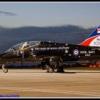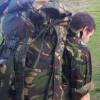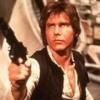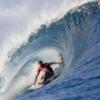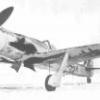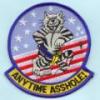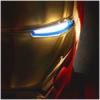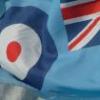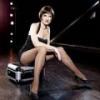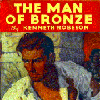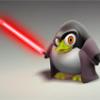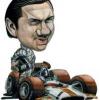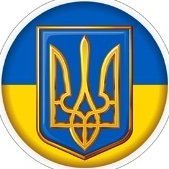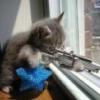Leaderboard
Popular Content
Showing content with the highest reputation on 13/09/12 in all areas
-
Do you think that they will still be able to source spares for the RR Kestrel engines?2 points
-
1 point
-
Convair Delta Dagger F-102A (Case X) 1:72 Meng Models New Release Meng are to release a brand new tooling of this good looking aircraft in 1:72 which was America's first supersonic all-weather interceptor, which will have Meng's usual attention to detail, including the following: The kit offers various painting options which have been strictly verified The best assembly option and precise fit Retractable built-in pylons Canopy can be built either open or closed precise exhaust nozzle Precise model lines completely reproduce the perfect shape of the Area-ruled F-102A aircraft Landing gears and airbrakes can be built either open or closed. If their previous releases are anything to go by, it should be just whate the 1:72 Cold War jet builder is looking for. Don't point your smartphone at the QR (3D-barcode thingy) in the bottom right just yet, as the site isn't quite set up for it, as this is a pre-release photo1 point
-
Hello Friends I started this kits a couple months ago but unfortunately my mom get sick and i didn't had the mood for kits for some time now, fortunately my mother is getting better so im getting better too and i returned to the bench with the Mil Mi-2 that i put here last week. I started here a WIP and i will put there the pictures that i took, for now i will show it already done. I didnt find many references pictures (only some in museums showing new aircrafts) so i didn't make it very very dirty... only with some use... I hope you like it, thank you for looking. Best regards from Portugal1 point
-
1 point
-
USS Enterprise-C 1:1400 scale Round 2 Models From the third series of Star Trek: The Next Generation, “Yesterday’s Enterprise” has proved to be one of the most popular episodes among fans of the series and critics alike. The episode centres around the USS Enterprise-C, which had been destroyed with all hands presumed lost, whilst defending a Klingon outpost from a Romulan attack, some 20 years previous to events in the TV series. This act of sacrifice by the crew of the Enterprise-C had been convincing enough for the Klingons to seek peace with the Federation. That history is changed however ,when Picard and the crew of the Enterprise-D witness the heavily battle-damaged Enterprise-C emerge from the past, through a temporal distortion. This immediately creates a new alternate history. By escaping destruction at the hands of the Romulans, the survival of the Enterprise-C means the Federation has been engaged in a brutal war with the Klingon Empire, for the past 20 years. Once the two crews establish what has happened, they must decide whether to let the Enterprise-C join in the fight against the Klingons, in a war which the Federation is loosing, or send her back through the time portal in order for the ship and her crew to meet their fate and restore the original course of history. The ship itself (an Ambassador class) was designed by Andrew Probert and Rick Sternbach to be a bridge between the older Excelsior and newer Galaxy class ships. Due to time constraints, this design was simplified somewhat, in order to allow Greg Jein enough time to have the studio model finished for shooting duties. It wasn’t as detailed as previous Enterprise miniatures, but since it was only to be used in wide shots, this was of less importance. The battle damage was painted on the ship and additional scorches were made by holding lit fireworks against the surface. Like previous starship miniatures, after it’s appearance as the Enterprise-C the model was altered and redressed, to be used to represent several other starships, including the USS Yamaguchi in Deep Space Nine’s pilot episode. The kit Lifting the lid of the box, we are greeted with 32 parts moulded in a light blue colour. We also have 11 parts in clear plastic, one of Round 2’s larger dome bases and a large sheet of decals, which includes marking options for the Enterprise and the Yamaguchi. In common with other releases in the range, the instructions are printed on a large fold-out, double sided sheet. Construction looks to be fairly simple for this one, with just 6 assembly steps. The saucer is broken down into upper and lower halves. The surfaces on these parts are quite extensively detailed, with nicely engraved grid lines, windows and raised lifeboat hatches. The phaser strips feature some extremely fine raised rib detail, which looks very authentic when compared to close-up screen shots of Federation hardware. Usually, these phasers are just represented by little more than raised lumps on other starship kits, so their inclusion here is most welcome. Early on, a decision needs to be made about which ship you are going to be building. We have optional parts that need to be fitted if building the Yamaguchi. We have 2 different styles of planetary sensor, which locates in the centre of the lower saucer, while up top, the Yamaguchi has extra lifeboat hatches running around the rear part of the saucer. These are supplied as individual pieces on the sprue, so some careful alignment will be necessary, in order to get them lined up straight. As is usual on this kind of Trek kit, the secondary hull is moulded in two halves (left and right), with the neck integrally moulded on each side. The outer surface is again detailed with engraved panel lines, windows and docking ports, with more raised lifeboats on the underside. Once again, we are supplied with optional parts. In this case, two styles of deflector are included on the clear sprue. There are also some modifications that need to be carried out, if building the Yamaguchi. On the underside, the forward eight lifeboats need to be removed with a file and then four additional hatches are added further back. The rear end of the underside is also a different shape for the Yamaguchi and this has been achieved by including a separate tail piece. The existing piece will need to be removed and a diagram is included in the instructions showing where the cut needs to be made, before the new part is added. The secondary hull is completed with the addition of the lower phaser strip and the impulse engine, which locates at the rear of the neck. The warp pylons are pretty straight forward, being moulded in upper and lower halves. Two separate phaser strips are added to the outside edge of each pylon. Again, if you choose to build the Yamaguchi, then there is some raised detail that needs to be removed from the underside, so as not to interfere with the new tailpiece. With that done, the warp pylon can be slid into the slot on the secondary hull. Some test fitting shows this should be quite a nice positive join, with notches at the forward end helping to ensure a good location. The warp engines are simple five piece units. An upper and lower half trapping the clear warp grilles and forward bussard domes, in between. It would be easier to tint these clear parts with clear blue and red paints, respectively, before assembly. The warp drives are a nice chunky size and there’s plenty of room inside, should you wish to add some LED’s to liven things up a bit. The paint job on this ship is quite complex, so it may be wise to tackle that while it’s in sub-assemblies. There is quite a lot of masking required, especially around the lower saucer, with lots of different shaded rings and this looks tricky to achieve with the saucer glued in place. As mentioned previously, the decal sheet provides the markings for the Enterprise and the Yamaguchi. Aside from the ships markings, Round 2 have also supplied a comprehensive set of battle damage markings for the Enterprise. These actually look quite nice. Although a little 2 dimensional, they have deck and lighting details printed on. When you consider the scale of the kit, they should look quite effective once applied. I think you could improve them further by darkening the edges of the damaged areas with either thinned Tamiya Smoke or ground chalk pastels, to simulate scorch marks around the affected areas. Conclusion Another welcome re-release from Round 2. Although not one of the prettiest versions of the Enterprise to ever appear on screen, it is a very nice looking kit. It features a good amount of detailing and with quite a low parts count, it should fall together pretty quickly, enabling the modeller to concentrate on that paintjob. The addition of those battle damage decals is a lovely touch and I believe it’s the first time anything like these have been included in a Trek kit. Once again, a big thumbs up for Round 2 Review sample courtesy of UK distributors for1 point
-
Hi Everyone, I have built many vehicles and aircraft, although this is my first Dragster ever, I was not sure if I was going to have time to start the build in August like I thought and sure enough, I was able to start mid August at least with the engine so I was very pleased with that. I probably will have to find time throughout September to continue the build and I hope I will have more time in mid November to finish the build just as long as my work does not hamper my progress. I have always liked racing, especially F1, NASCAR and V8 racing. So, I decided to take the plunge and finally start a Dragster. There are many wonderful modellers on this site so i hope to learn many more things from you. Any tips would be greatly appreciated. Thank you for looking. Regards, Belle I started taking photos of the box and the components of the kit as this is the first time that I have ever posted my progress on any site, including Britmodeller. I am using a simple digital camera so I hope everyone will be able to see the photos alright. Any tips appreciated. Here are half of the components of the kit consisting of the driver, parachute, part of the engine and the dragster exterior shell (unpainted ) in two parts Here is the other half of the components of the kit consisting of the other parts of the engine, mag wheels, axles and steering wheel. Here is a close up of the engine on the box Here are all the parts of the engine that I hand painted separately The engine came together great with plastic cement glue. Unfortunately, the black gloss paint ran and I had to scrape it off of the pulley wheels. See above. Finally after weeks of waiting for the paint to arrive through the mail from the UK, I started applying the coats to the exterior of the dragster. The paint appeared to be applying well and I decided to continue on with the process. Soon after, the paint seemed sticky and stringy, most of it appeared to be fine, so I decided to continue with painting. I even thinned the paint as it started to apply much better. Although, after applying the coats, the surface seemed crusty, bubbly and when I set it aside to dry for two days, the final end result was a disaster. I should have thrown it away, although I had been searching for this specific brand in gloss colors for months with no luck whatsoever in finding the mix. I even decided to search for the specific colors while visiting family and friends in Melbourne Australia in June and even with their wonderful hobby shops was not able to locate the brand and colors that I wanted. I was so irritated, frustrated and sad all at the same time, that I needed assistance with removing that miserable paint, so I e-mailed members Plasticbutcher and Arniec for their assistance. Thank you guys. Miserable caked, crusty and bubbly paint. This is the side near the back of the dragster with the scaly bubbly crusted paint. Really miserable. Because of the paint being overheated and stringy, it was also extremely messy which made it even more difficult to remove from the exterior of the dragster. I tried everything to remove the paint. I was able to obtain some more advice from Plasticbutcher, a master with models and painting. He suggested for me to soak the parts in brake fluid overnight, wash off the exterior and start again. I started to take his advice, although in the midst of trying to get to the auto store, I started thinking about where I was going to recycle the fluid once I was finished. Since I could not think of a place that was environmentally safe, I decided to use low grade sand paper. And being a bit of a rebel, I decided to take things into my own hands as it seemed and press onward with removing this miserable crusty bubbly paint. The sandpaper looked like it was doing the trick then in the middle of the deed, the exterior was scratched and the markings had disappeared completely from the molding. I was forced to order another kit online. Good news, the new kit arrived three days ago, I started fresh again yesterday with the exterior of the Dragster. What a beauty, at least so far, no bubbles, no chipping and nothing but a good fresh white shine... I am pleased!! I first used a white primer and let dry. Then I sprayed it with white gloss waiting about three hours between the coats and in two days she should be dry and ready to use Tamiya mask and then I will start to apply the next color ... I masked the white gloss parts of the dragster today Then I sprayed painted the dragster blue gloss...the blue gloss is not exactly the color that I wanted...although it was close to the color paint that was recommended for the model. This photo doesn't do the color and shine justice. Poor lighting with a poor camera... Now, I am just letting it dry for a couple of days before peeling off the Tamiya tape from the white gloss. I started on the driver yesterday and painted the accessories. After the dragster exterior is ready, I will proceed with gluing the driver together and starting the placement of the components of the engine into the model. Although, because of my work schedule, it may not be until early October before I can actually start the assembly. Although, glad that I started the 2nd color and now on my way to about 1/3 way finished. Here are the unpainted components to the driver Here is the painted components of the driver...soon I will be cementing them together. I am signing off for now. Cheers, Belle ( Karen )1 point
-
Hi Guys here is my latest , it is the 1/48 scale Kitty Hawk F-35B Lightning II built straight from the box. I have built this for a future edition of Model Airplane International and as such I will not show more than the two images here . Hope that you like her? John1 point
-
Here is model number 10 for me. First time using anything aftermarket. Aires db603 engine. It was supposed to be a quickish build but that didn't happen. Kit went together fine and am really happy with it. Take time if you can to have a look at the wip. There is a lot you can't see from the pics. This is the voluminous wip http://www.britmodeller.com/forums/index.php?showtopic=234921183&hl= This was what I was aiming for And here is what i ended up with....enjoy. Hope you liked. Not perfect but then what is?? Model number 11 may be some way off as baby here soon. Thanks so much for looking Kevin1 point
-
Hi everyone, this here is the first model aircraft I've built in over fifteen years, made as part of the recently finished Aerobatic GB Airfix 1/48 and thoroughly enjoyable Hope you like.1 point
-
I sincerely hope they drop both parts of the Air Seeker name. To my mind it's too easily misheard as A*** Licker - imagine what ribald Australians and yanks will make of that, with or without the assistance of alcohol! Choose as daft a name as you like for the project but give the actual aircraft - that brave people have to fly and maybe fight in - something a bit inspiring/aspirational. I mean, it's not as if the person tasked with thinking up sensible names for aircraft newly entering RAF service is going to be overburdened with work. Atlas isn't too bad. Voyager: yawn. And whatever bright spark thought up the idea of calling the FAA's completely toothless King Airs Avengers should be strung up reassigned forthwith.1 point
-
Is there much difference to the GR3? looks great and if their F-35 is anything to go by, Kittyhawk seem to be very quick at releasing their subjects! Dave1 point
-
I also had the pleasure of sitting in a Spit! Many years ago in Southampton when I was alot.......'lighter'!! Cried like a baby afterwards..............Sivers, goose-bumps......you name it, I had it! Never, ever forget that day.1 point
-
Some thoughts on seating based on Construction and Use for the late 1950s: Upper deck - You probaly have an inner dimension of 31 ft 6 ins clear floor length. A reasonable seat pitch would be 31 inches. This would give 12 rows of seats on the nearside, being 11 x 2 plus 1 x 3 at the extreme rear alongside the stair. On the offside you would have 9 rows x 2 plus 1 x 1 (to allow circulation at the stairhead), giving a total of 44. Downstairs you have positioned the offside emergency exit window as the second lower deck bay. On vehicles where this is positioned as the first bay, there is circulation room (admittedly limited) between the bulkhead and the front seat. You will need to allow floorspace access to the window (a scale foot would be adequate) so the seat pitch between one set of seats adjacent to the window will need to be 43 inches. Let's assume 210 inches between the front bulkhead and the forward side of the longitudinal seats. On the nearside you have room for 6.7 rows at 31 inch pitch. On the offside you have the same room but you need 1 row at 43 inch pitch, leaving room for 5.3 rows at 31 inch pitch. I'd match the gaps on each side and this will give a small gap between the back of the last row and the forward side edge of the longitudinal seats which, for safety, ought to be ocupied by some sort of soft covered dividers. Similarly the logitudinal seats need some form of division as trolleybuses have excellent acceleration and tend to have sharper brakes so the potential for unrestrained passengers to be injured is high. In terms of the mid/late 1950s the length of unrestained longitudinal seats was restricted in the light of problems found in WW2 when a number of injuries were caused to passengers on single deckers which had been converted to longitudinal, peripheral seats to allow crush loading in standee configurations. If you follow theabove, you will have a lower saloon seating capacity of 6 rows of 4 seats plus two rows of 7 longitudinal. This gives 38 seats so the total seats on the bus would be 82. You also need to address the point of standees as you will have to show the seating capacity plus the number allowed to stand. Union agreements and the Traffic Commissioners - in London the Met Police - determined the number which, in the period, was generally 5,whatever the bus length, as the poor conductor had to struggle past standees to collect fares Hope this helps.1 point
-
Looking good. If I had one comment, it would be the upstairs seating capacity. The 27' 6" RM has 36 seats upstairs and the 30' RML has 40 seats upstairs. Your trolley is 2' 6" longer than an RML, but you have managed to squeeze in 8 more seats. To match the seat spacing of the RM and RML, I would have gone with 44 seats upstairs. Having said that, it is your design, so you have the last say!1 point
-
The Sky Blue used by the RAF is No.16 in the Ministry of Aircraft Production (MAP) paint colour standards whereas the Sky Blue used for things like painting window frames and garage doors was No.1 in the BS 381C (1931) paint colour standards for commercial paint manufacturers. But they are both paint colour standards not the actual paints. The paint made by commercial paint manufacturers was supposed to match those standards so that if you bought Sky Blue paint from Bloggs & Co it would be pretty much the same colour as Sky Blue paint bought from McTavish & Sons. That was the theory. In practice it didn't and doesn't quite work like that. MAP Sky Blue is Munsell 6.1 B 7.6/1.6 whereas BS 381C No.1 Sky Blue is supposedly Munsell 5.5 G 8.1/4.1. Difference between the two is 17.4 where 2.0 or less = a close match.1 point
-
Coming along now , I've got the undercarriage on added the tail wheel , doors and a tailwheel guard. Just sprayed a coat of Halfords grey primer , it all looks to have blended together nicely, bit of a rub down and it should be ready for paint. Andrew1 point
-
1 point
-
I hope the seat's done now - I added tape lap belts, and the blue cover for the top of the cushion from Roy's cockpit photo link above. I also touched in the headrest in pure black as opposed to black grey, and added the HUD. Nearly ready to fit all those parts into the fuselage. Any tips for painting individual buttons? I find my depth perception fails me and I can't always get the brush (or cocktail stick) to go where I want. If it's a bank of switches the same colour then drybrushing works well though. Will1 point
-
1 point
-
I have used Overhead Projector Pens in the past, Using the permanent variety applied from the inside of the canopy. Try to complete it in one hit or the later application of ink will allow the spirit carrier to attack the earlier layer. IPA will allow wipe offs for further attempts. A thin coat of varnish over the ink will seal it. Good Luck Rex (Video search for Rex's Falklands Hermes might prove interesting!)1 point
-
Basic filling and sanding are done and the wings are glued on. Time for a little more filling around the wing joins and then the primer coat. The winglets were borrowed from a Daco kit that won't need them. It turns out that Daco winglets are too tall for the classic 737s, which makes them just about right for an NG except for the short chord. I'll need to fill in that missing piece of leading edge. Now a little fun. Here's the -200 that I'm doing for the Aeroscale's Airfix Campaign. Note how different the NG wing is when compared to the original. Apparently this wide wing makes the -600 a little more challenging to fly than its stablemates.1 point
-
Hi Karen: Sorry for the trouble you had but things like that make all of us learn how to manage all, thank you very much for being so brave to post about it. About the brake fluid, when I have had bad experiences like that, I applied the BF to the pieces with a paint brush as normal paint and let the pieces dry in a plastic or metallic tray and when the paint start to make flakes i washed the pieces to scrap all the paint. Cheers and go for this one!!!1 point
-
1 point
-
I've nearly finished the flightdeck now, with the engineer, radio operator and navigator positions being scratch built. The first job was the console for the engineer. This was simply made from plasticard, with the dials and gagues being drilled plastic sheet. The throttle and propeller pitch levers were made from some modified left over resin parts I had. The pound coin gives a sense of scale to this piece: After that it was on to the rest of the rear of the flightdeck. All tables, crew chairs and the like were made from plasticard and Milliput. The large dome on the floor is the pressurisation covering for the lower turret. Again this was fashioned from Milliput. The various other resin items such as radios etc. were spares left over from my previous 1/32nd scale B-17 and B-24 builds. I also added some framing detail and the door to the bomb-bay to the pressure bulkhead. I haven't gone too mad on the detailing in these areas as very little will be seen when the fuselage in closed up. Some light will come in from the open door in the floor and through the navigator's and engineer's windows, but on the whole it'll be pretty dark back there. Once it's all under a coat of paint and various details are picked out I think it'll look ok. Again, it won't be the most accurate representation of a B-29 flightdeck out there, but it'll look fine behind all that glass! I now need to make some control columns abd then I'll start on the rear crew area directly behind the rear bomb-bay. Thanks for stopping by Tom1 point
-
I'd sit on the right as there is a bloody great finger poking in on the left.1 point
-
I'm thinking about doing a second one if its acceptable at this stage, as it seems to be a popular idea. I have thought about doing a 747, either Revell one in Thai colours which I've started cutting out, or the Zvezda one in Boeing house colours. Then again, there are a few very nice 747's already planned by others, so I might try something a bit different to keep the variety of subjects going. Maybe that Welsh Vac Fokker F27 in TAT colours, or Braathens. Decisions, decisions Hmmmm.....1 point
-
love the inside shot of lower deck, now where shall I sit for the maiden journey.1 point
-
Rear suspension. Here a dry fitting test fo the rear suspension: It is the same for both P83 and P115, but different from the P83/1966 one, having lost the upper arm. Again a dry fitting test, with the wheels added: Here the complete assembling; P115 on the right, with the oil tank already in place: Both rear suspensions have already to be washed. Gearboxes were painted with Humbrol Gun Metal. The frames and the upper arms were different: Alclad Gun Metal for P83, Alclad Aluminium for P115. The oil tank was painted with Alclad Matt Aluminium. Now it's time to fit the engine to the chassis. First step. Fitting test for the screws (red arrows) of the little frame which keeps the lower part of the engine: Second step. Verifying the holes for the engine on the chassis (A) and fitting test for the lower arms of the rear suspension ( Third step. Fitting test of the frame to the engine: The red arrow shows were the engine has to be sanded a little for a right fitting. Fourth step. Fitting the frame to the chassis: Finally, both engines can be fitted to the chassis: Here the filter on the engine has been added: The instructions say to paint this filter with "Right Blue": remember that Japanese people are not able to say the "R", so they make confusion between "R" and "L". Therefore the correct word is "Light Blue". Anyway, that colour doesn't match the real one, as you could see in those pics of the time: Therefore I used the Humbrol Matt 87, which matches better the real one, even if the flash altered its appearance.1 point
-
Just a small OT note: all the 88 Luftwaffe RF-4E had the square camera nose. A number of these aircrafts were later sold to Greece and Tukey after their retirement1 point
-
i have an east solution - just dont finish any models! i never manage to and as a result my display issues are negligible!1 point
-
You have a nice little cockpit going there, Sir. I have the 'Les Ailes de Gloire' number on this type, and you are jibing with the cutaway drawing it contains.1 point
-
Welcome in the club . I am now interesting about Trumpeter reaction? Finally I bought two kits to get one MF with two R-23 and second to make M or MS version with four R-3/13.1 point
-
Well if three failed build led you to produce that I'd say they were worth it! Great job! Are they TwoBobs decals btw? Andy1 point
This leaderboard is set to London/GMT+01:00



